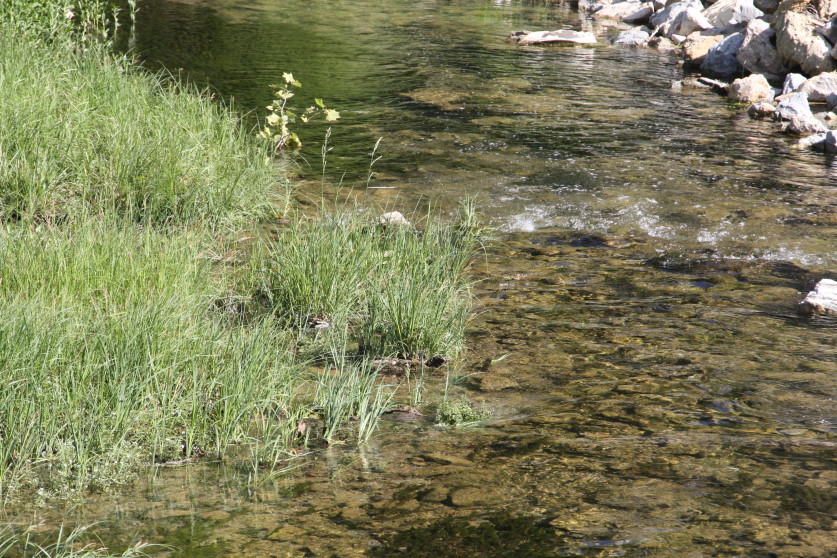
Agricultural News
The Conservation Efforts in Oklahoma Continue to Yield a Bumper Crop of Success Stories- We Visit with Clay Pope
Tue, 09 Nov 2010 13:48:52 CST
 Several positive stories about conservation efforts have surfaced in recent days- and we had the opportunity to sit down with Clay Pope, Executive Director of the Oklahoma Association of Conservation Districts, and discuss the good news about conservation work in the state. Click on the LISTEN BAR at the bottom of the page to hear our conversation about the Natural resource Conservation Service Committment to a mult year investment through the EQIP program for the Eucha-Spavinaw and Illinois river Watersheds, as well as recent word from the EPA of Oklahoma having a substantial number of the success stories in the Clean Water Act efforts of the Federal- State- Private partnership.
Several positive stories about conservation efforts have surfaced in recent days- and we had the opportunity to sit down with Clay Pope, Executive Director of the Oklahoma Association of Conservation Districts, and discuss the good news about conservation work in the state. Click on the LISTEN BAR at the bottom of the page to hear our conversation about the Natural resource Conservation Service Committment to a mult year investment through the EQIP program for the Eucha-Spavinaw and Illinois river Watersheds, as well as recent word from the EPA of Oklahoma having a substantial number of the success stories in the Clean Water Act efforts of the Federal- State- Private partnership.
Below is a news release from the OACD on the recognition from the Environmental Protection Agency of the Clean Water Act work in Oklahoma:
A recent report from the Environmental Protection Agency (EPA) shows Oklahoma's efforts to reduce non-point source pollution in water through voluntary, locally-led conservation practices have propelled the state to the top of the region in the reduction of nutrients and other contaminants in water according to Trey Lam, President of the Oklahoma Association of Conservation Districts (OACD).
"We are extremely proud of the work that has been done and is being done to address water quality concerns in Oklahoma through cooperative conservation," Lam said. "By working with farmers, ranchers and other landowners through voluntary best management practices, the Oklahoma Conservation Commission in partnership with local conservation districts and the Natural Resources Conservation Service (NRCS) is leading the way nationally in addressing non-point source pollution. This is something all Oklahoman's should be proud of."
According to Lam, the report released by the EPA show Oklahoma as the leading state in Region 6, an area consisting of Oklahoma, Texas, Louisiana, Arkansas and New Mexico, in the number of water quality success stories EPA has documented. The EPA defines Nonpoint Source Program success as restoring the quality of impaired water bodies to the point where they are no longer considered impaired based on water quality standards. Currently, Oklahoma accounts for nearly 10% of all the success stories documented by EPA, a record that OACD's Lam said results from the system used by Oklahoma to address non-point source pollution through best management practices (BMP's).
"By using the same basic approach we used to turn back the dust bowl to address water quality issues, Oklahoma has once again shown that voluntary, locally-led conservation can work," Lam said. The Conservation Commission, in cooperation with local conservation districts, engages local folks through local watershed advisory groups to determine what sort of practices could work in an area and to get feedback from landowners on the acceptance of different BMP's. The Commission then takes state dollars and matches them to Federal Clean Water Act 319 funds to create a watershed specific cost-share program with additional technical guidance and support from NRCS. The local districts and the Conservation Commission then work with landowners with these funds to get the BMP's established on the ground. Because of this approach as well as educational outreach through programs like the State Blue-Thumb program, Oklahoma has established a track record where we have never had a water quality program that didn't run out of money before we ran out of landowners willing to cooperate on getting these practices done. We always run out of money before we run out of willing cooperators and it is largely due to this cooperative approach and local buy-in."
Lam said all this success is something to be proud of, but it can't continue without support from the State and Federal Government.
"During these tight budget times it is critical that we keep resources committed to getting these water quality efforts on the ground," Lam said. "Already, some in State Government are talking about moving 319 funds away from the water quality efforts at the Conservation Commission to plug agency budget holes or they are talking about cutting the funds used to match these federal dollars or the funds needed to hire the individuals necessary to work with local landowners to put the dollars on the ground. If we want to continue to see these kinds of successes in the area of water quality, we have to make sure that funds are not pulled away for other purposes. If not, we run the risk of putting the quality of our water in jeopardy and opening up the state to future law suits. That is something we have to keep from happening."
WebReadyTM Powered by WireReady® NSI
Top Agricultural News
More Headlines...



















